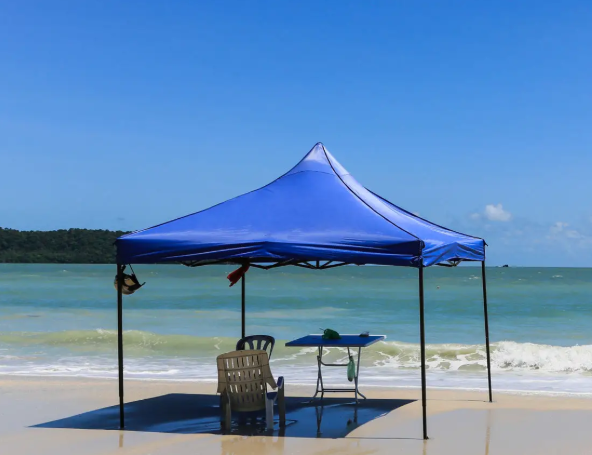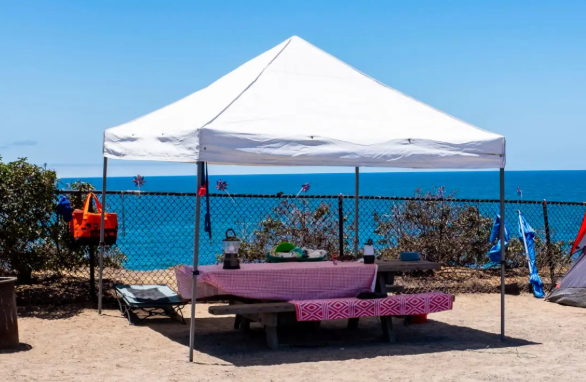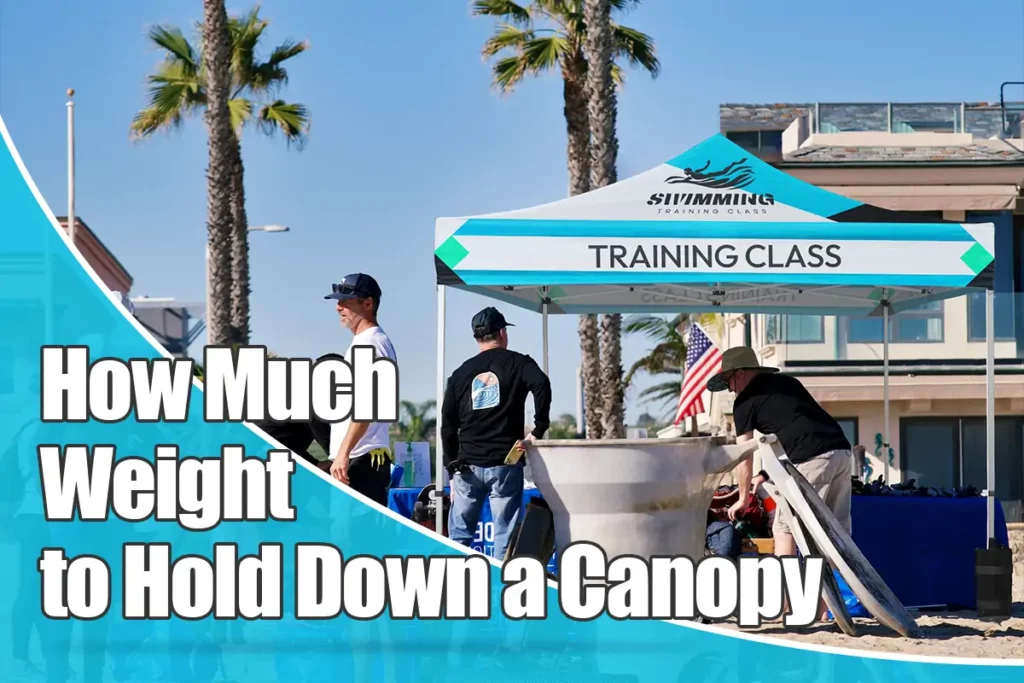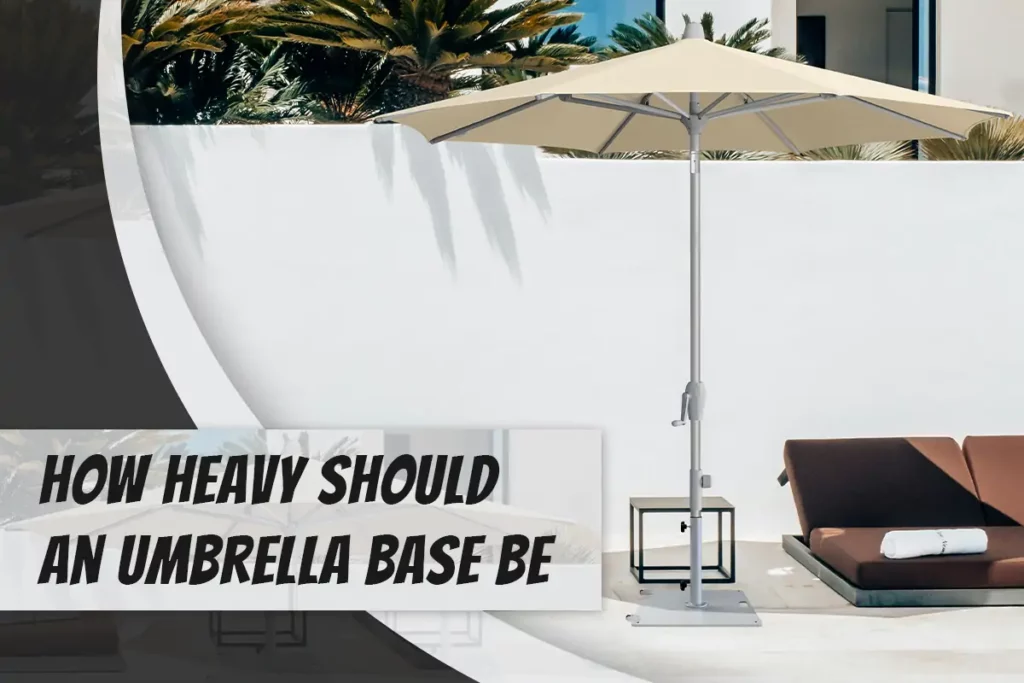
Setting up a canopy tent on sand is very different from pitching one on grass or solid ground. The surface is soft, unstable, and often exposed to stronger winds, which makes your tent more difficult to handle. If you want reliable shade by the ocean without worrying about your tent tipping over, you’ll need to choose the right features for a beach-friendly canopy.
This guide will explain what to look for in a canopy designed for coastal events and how to keep it securely anchored on the sand.
What Makes a Good Canopy Tent for Sandy Beach Events?

Hosting an event by the ocean is exciting, but the environment can be challenging. Strong sea breeze, high humidity, and salty air can wear down regular tents much faster. That’s why you need a canopy tent designed with the right materials and features.
1. Premium Canopy Materials
Choose fabrics with unique coating treatments. The PU coating is a good option for beach events. It creates a hydrophobic (water-repelling) surface on the canopy fabric, preventing water from soaking in and keeping the canopy dry, even in humid or rainy conditions. The matte coating also helps prevent UV light and provides extra protection by offering a smooth, non-glossy surface that resists dirt and water. The matte treatment reduces glare, making it more comfortable for both visitors and organizers, especially during outdoor events that need a sleek and professional look.
2. Corrosion-Resistant Canopy Frame
The salty air at the beach can quickly corrode standard metal frames, leading to rust and wear. To ensure your canopy lasts longer, look for frames made of corrosion-resistant materials such as high-strength aluminum or powder-coated steel. These materials are designed to withstand the harsh beach environment and help maintain the structural integrity of your canopy over time.
3. Anchor and Stabilize Your Canopy
Stability is crucial for a canopy at the beach, especially with the soft sand and windy conditions. The sturdy foot plate design plays a critical role in keeping your canopy anchored securely. At Westshade, we offer three foot plate options, each designed for optimal stability in beach conditions. We still provide free weights and straps, or you can easily DIY sand weights by filling bottles with sand. These combined solutions ensure your canopy stays firmly in place throughout your event.
Tips for Setting up and Securing Your Tent on the Sand
1. Find a Good Spot for the Tent
Even though finding a good spot to set up shop is always important when planning an event, it’s even more crucial when you’re on a beach. You don’t want to be too close to the shoreline, especially during a low tide. Not only is the wet sand difficult to deal with, but when the tide comes back in, everything you painstakingly set up will submerge underwater.
Finding a dry spot away from the coat is ideal. You will likely need some wet sand for some of the following tips, but you can bring that to your location as required. Also, try to make sure the area you choose is relatively flat. Obviously, that might not always be possible on a beach, but it’ll make certain things easier later on.
2. Lock Parts Into Place
Once you picked your spot, it’s time to start opening the tent. You’ve likely done this countless times. But now more than ever, you must make sure you lock all the joints and latches into place. Since your tent will deal with uneven surfaces and gusty winds, it could collapse in on itself if these pieces aren’t locked together. This might not be as necessary on flat ground. On a hilly beach, though, it’s a must.
3. Dig Holes for the Poles
Whether or not you find a flat section of sand, the best way to secure your tent is to put it into the ground. That means you’ll want to dig a hole for each leg. A few inches deep for each leg should be adequate, but some might need to be deeper if the surface is a bit lopsided.
Once you’ve dug out the holes and placed the legs into them, grab some wet sand from the shoreline to fill the holes. This will help keep the tent more secure. It’s not a bad idea to put some of this wet sand underneath the legs as well so that the tent doesn’t sink while you’re using it.
4. Weigh Down Your Canopy

No matter how well our previous tips for setting up your canopy tent at the beach work, the wind sometimes just doesn’t want to cooperate and blows your tent over anyway. That’s when you’ll want to make an extra effort to weigh it down. No matter how well our previous tips for setting up your canopy tent at the beach work, the wind sometimes just doesn’t want to cooperate and blows your tent over anyway. That’s when you’ll want to make an extra effort to weigh it down. A canopy tent 10×10 is a popular choice for anyone who wants to set up a booth near the beach. To ensure it stays securely in place even in sandy conditions, you’ll need to take additional steps to weigh down your canopy effectively.
Normally, you would tether it down with some spikes, but since those won’t hold in the sand, you’ll want to attach these ropes to some weighted bags or buckets. You can fill these with anything heavy, but wet sand also works great for this purpose.
Conclusion
Setting up a canopy tent on the sand presents unique challenges, but with the right preparation and tips, you can enjoy a stable and reliable shelter. Consider selecting the canopy fabrics with unique PU or matte coating, using corrosion-resistant frames for coastal conditions. Proper anchoring and weights will ensure your tent stays securely in place, even in windy and humid beach environments.








